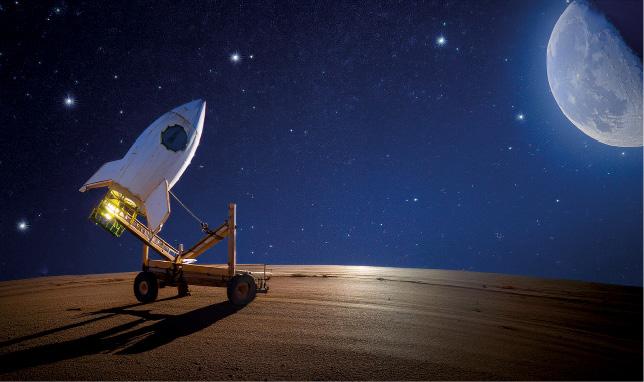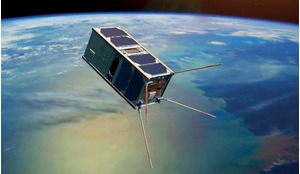Since its inception, space travel has been a source of fascination for the most innovative and original of thinkers. It’s a fantastically challenging field and the obstacles that we must overcome are both stubborn and alarming. For decades, scientists have struggled to drive down the cost of access to low Earth orbit (LEO) and until very recently, no-one has really made progress in this field.
Now, however, we are starting to see a change. SpaceX has come up with a launch vehicle where the first stage can be reliably retrieved and recycled for up to 20 additional launches. The second stage is still regarded as a disposable item, but a reusable first stage brings a precipitous reduction in costs.
But what if we could do better than that and eliminate the need for a first stage altogether? Two American startups are now looking to eliminate the first and possibly even the second stage of the satellite launch vehicle. It’s a true David and Goliath story where the undersized upstarts are threatening to challenge the better resourced and well-established rocket manufacturers that have come to dominate this field.
 Catapults reportedly date back more than 2000 years. Today’s designers are aiming to use advanced catapult technology for greener
Catapults reportedly date back more than 2000 years. Today’s designers are aiming to use advanced catapult technology for greener
SpinLaunch
The catapult system effectively replaces the first stage of the launch vehicle, ostensibly saving the associated costs
The first proponent is SpinLaunch, a spaceflight development company based in Long Beach, California, working on mass accelerator technology that hurls a rocket stage to a very high altitude. A rocket stage is then ignited at the apogee of its trajectory, far above the bulk of the Earth’s atmosphere and already a significant fraction of the distance to LEO.
Its approach is based on a catapult not at all dissimilar (at least in principle) to the device that the Old Testament figure David used to defeat his gigantic opponent Goliath. SpinLaunche’s catapult is contained in a flattened cylinder and rotated for over an hour until it reaches a high rate of spin. To reduce the problems associated with air resistance, the interior of the cylinder is evacuated. When it reaches peak speed, the projectile is released into a short tube and punches through a tight membrane stretched across the exit barrel to contain the vacuum. At the apogee of its trajectory, a rocket engine ignites and propels the cargo to LEO.
The catapult system effectively replaces the first stage of the launch vehicle, ostensibly saving the associated costs. While several launch companies are now quoting a figure of US$250,000 to launch a small satellite, the engineers at SpinLaunch hope to slash this figure ever further. However, SpaceX is heading towards a figure of $2,500 per payload and, if the Super Heavy Starship project lives up to expectations, launch costs could fall further.
A prototype catapult has already been built in the United States and the first test launch was achieved in October 2021. SpinLaunch went on to perform nine more launches in 2022. Using its current prototype system, the company has reached altitudes similar to those already achieved by commercial jet airliners. However, to develop a functional satellite launcher it will need a much larger centrifuge (three times the current size) and the company has been relatively quiet since 2022.
Launch sites in Hawaii and Alaska have been considered and, more recently, Australia has been suggested as a launch site for SpinLaunch. However, its ideas have come into conflict with modern day ‘nimbyism’ that seems to threaten all large-scale engineering projects.
 The current Longshot accelerator consists of a kick stage, providing the initial impulse, followed by three boosters along the length of the 60-foot barrel. It is capable of accelerating payloads up to 6 inches in diameter to Mach 4.2.
The current Longshot accelerator consists of a kick stage, providing the initial impulse, followed by three boosters along the length of the 60-foot barrel. It is capable of accelerating payloads up to 6 inches in diameter to Mach 4.2.
Longshot
Longshot aims to use a ‘space cannon’, which - it is claimed - would be able to fire a shell into low Earth orbit with a single blast
If SpinLaunch sounds audacious, how about the second American start-up in this group, Longshot, which is at an earlier stage of development than SpinLaunch but has an even greater ambition? Having set up shop in Oakland, California, a small group of engineers are trying to eliminate the need for a rocket-based launch system altogether.
Longshot aims to use a ‘space cannon’, which - it is claimed - would be able to fire a shell into low Earth orbit with a single blast. With this system, a bullet-shaped capsule would be ejected from the gun barrel at a speed of more than Mach 25, hurtling skywards without any kind of onboard propulsion.
Of course, neither system would be suitable for human passengers and both would be forced to concentrate on the most sturdy of electronics or perhaps develop a business restricted to launching fuel and raw material supplies. However, systems of this kind might still be able to drive down the costs of space launches.
Sending one man into LEO for six to twelve months requires several tonnes of food, oxygen and medical supplies. Super high-g force guns and catapults of this kind would be suitable for this kind of application.
 US start-up Longshot is building a cannon to gradually accelerate a projectile up to orbital launch speeds, with the goal of launching cargo into space. Shown here, the Longshot team with CEO Mike Grace (front row centre).
US start-up Longshot is building a cannon to gradually accelerate a projectile up to orbital launch speeds, with the goal of launching cargo into space. Shown here, the Longshot team with CEO Mike Grace (front row centre).
Asked how Longshot intends to accelerate projectiles to such a high speed, Longshot CEO Mike Grace said: “Basically, our system is a gas-driven accelerator that works in two stages. The first is a multi-injection gas gun (which goes ‘pop-pop-pop’ rather than boom!); this is the same architecture the German V-3 cannon was built on and has many advantages.
“The longer we build our system, the lower the g-forces applied to the payload, and the lower the peak pressure and temperature need to be at any point in the system”, explains Grace.
According to Grace, an important limitation of such guns is the speed of the gas, so this stage serves to accelerate the projectile to high supersonic/low hypersonic speeds (about one fifth of orbital velocity). The vehicle transitions to a long, evacuated tunnel with many inward-pointing nozzles, which open and impinge on a long aerodynamic wedge that acts as a sabot to keep the payload in the correct position. “By taking advantage of the long geometry of the wedge, we can use a relatively slow gas to accelerate a projectile to very high speeds”, says Grace. “It’s fundamentally the same principle that allows a sailing vessel to travel many times the speed of the wind by moving at an angle to the wind”.
A “baseline space launch accelerator” would be around 10 kilometres in length
Although Longshot considered setting up the system on a mountain to reduce air resistance, they dismissed the idea: “Building anything on a mountain is incredibly expensive and there are no mountains in the world with a 2-km long 45-degree smooth slope. Also, there are very few sites in the world that would be appropriate, because any kinetic launch system is comically loud, so we need to be at least 20 km away from any settlements”.
By building the system flat on the ground in a desert, Longshot hopes both to lower the cost of construction and expand the number of potential sites for a system that is many kilometres long. Grace says a “baseline space launch accelerator” would be around 10 km in length (which compares favourably with the rocket sled at White Sands which is around 20 km long).
Although a kick stage will be required to circularise the orbit, this could be a standard cold gas or solid motor system, says Grace. “Ninety-nine per cent of the juice is coming from the ground so effectively we are proposing a single-stage-to-orbit system”.
 Engraving from an early edition of Jules Verne’s From the Earth to the Moon showing the firing of the Columbiad cannon, with the “projectile” visible top centre of the image. Verne’s calculations for the requirements for the cannon are remarkably accurate considering this was long before such missions were even considered.
Engraving from an early edition of Jules Verne’s From the Earth to the Moon showing the firing of the Columbiad cannon, with the “projectile” visible top centre of the image. Verne’s calculations for the requirements for the cannon are remarkably accurate considering this was long before such missions were even considered.
Lunar application?
Looking forward, it is possible that such a system could be employed on the Moon, adds Grace. “Interestingly, I was contacted by a guy who is interested in using our system on the Moon. His argument was that oxygen is going to be an abundant by-product of lunar industry and could be used in our gas driver. My historical position is that gases of any kind may be too valuable to use in this way in space, but while I’m not a fan of magnetic rail guns for LEO, escaping the Moon’s gravity is much easier and may be an appropriate use of them”.
Longshot has now fired test projectiles at a fixed target in the lab at speeds of up to Mach 4.2 and, although that is a long way from orbital velocity, the potential to transform the economics of space travel remains.
About the author
Steven Cutts is a doctor, film producer and science writer based in Norwich. He studied physics at Imperial College and medicine at St Thomas’ Hospital London. His science fiction novel The Village On Mars is available on Amazon. He has previously published in Spaceflight magazine, Esquire, the Birmingham Post and very extensively in the Independent Online.














